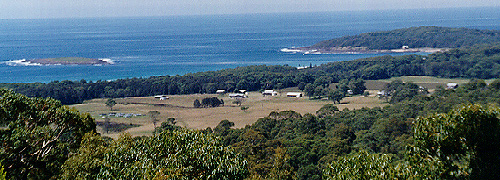|
|
|
Topology and Representation Theory at Kioloa 2014 |
November 9-14 |

Program Description
Topology and Representation Theory at Kioloa will be held November 10-14 (Monday-Friday) at the ANU Coastal Campus at Kioloa.
Information for participants
The organizers will arrange accommodation for all participants. Talks will be held in a classroom. Map.
Participants
- Scott Morrison (ANU)
- Tony Licata (ANU)
- Joan Licata (ANU)
- Amnon Neeman (ANU)
- Brett Parker (ANU)
- Hoel Queffelec (ANU)
- Dennis The (ANU)
- Nora Seeliger (ANU)
- Anthony Henderson (Sydney)
- Oded Yacobi (Sydney)
- Peter McNamara (Sydney)
- Stephan Tillman (Sydney)
- Arun Ram (Melbourne)
- Zajj Daugherty (Melbourne)
- Neil Hoffman (Melbourne)
- Nora Ganter (Melbourne)
- Alex Ghitza (Melbourne)
- Hilary Hunt (ANU)
- Hannah Keese (ANU)
- Zaiga Thomann (ANU)
- Benedict Morrissey (ANU)
Abstracts
- Dennis The - Symmetry gaps for geometric structures
- For a given geometric structure, there is often a gap between the maximal and "submaximal", i.e. next realizable, (infinitesimal) symmetry dimensions. This was first observed in the late 19th century for Riemannian metrics and such gaps were subsequently classified for various other geometric structures.
Parabolic geometries are a diverse class of geometric structures that include conformal, projective, 2nd order ODE systems, Legendrian contact, etc. More abstractly, such structures can be viewed as "curved versions" of generalized flag varieties. In recent work with Boris Kruglikov, we found a uniform approach to the symmetry gap problem for parabolic geometries. In many cases, this geometric problem reduces to pure combinatorics - in particular, I'll describe a recipe for reading off the submaximal symmetry dimension from a Dynkin diagram.
- Stephan Tillmann - Thurston norm via Fox Calculus
- (Joint work with Stefan Friedl) The Thurston norm of a 3-manifold
measures the minimal complexity of surfaces representing a given homology
class. We will show how in most (possibly all cases) one can use Fox
calculus to easily calculate the unit ball of the Thurston norm if the
fundamental group has at most two generators. The main ingredients are
marked polytopes, which generalise the Bieri-Neumann-Strebel invariant, a
group theoretic analogue of the Thurston norm, and a link between Fox
derivatives and genealised Novikov rings.
- Amnon Neeman - Separable $tt$-rings in $D_{qc}(X)$
-
In a series of recent papers Balmer defined the notion of a "separable $tt$-ring" in a tensor triangulated category. It is relatively easy to see that if $f:Y\to X$ is an etale morphism of schemes, then $Rf_*O_Y$ is a separable $tt$-ring in $D_qc(X)$. The main theorem is that these are in some sense the only ones.
In the talk we'll explain the theorem more precisely, say something about its relevance, and a tiny bit about the proof.
Contact
Contact Scott Morrison at scott.morrison@anu.edu.au for more information.
|
last modified: 2014-10-17
|
|